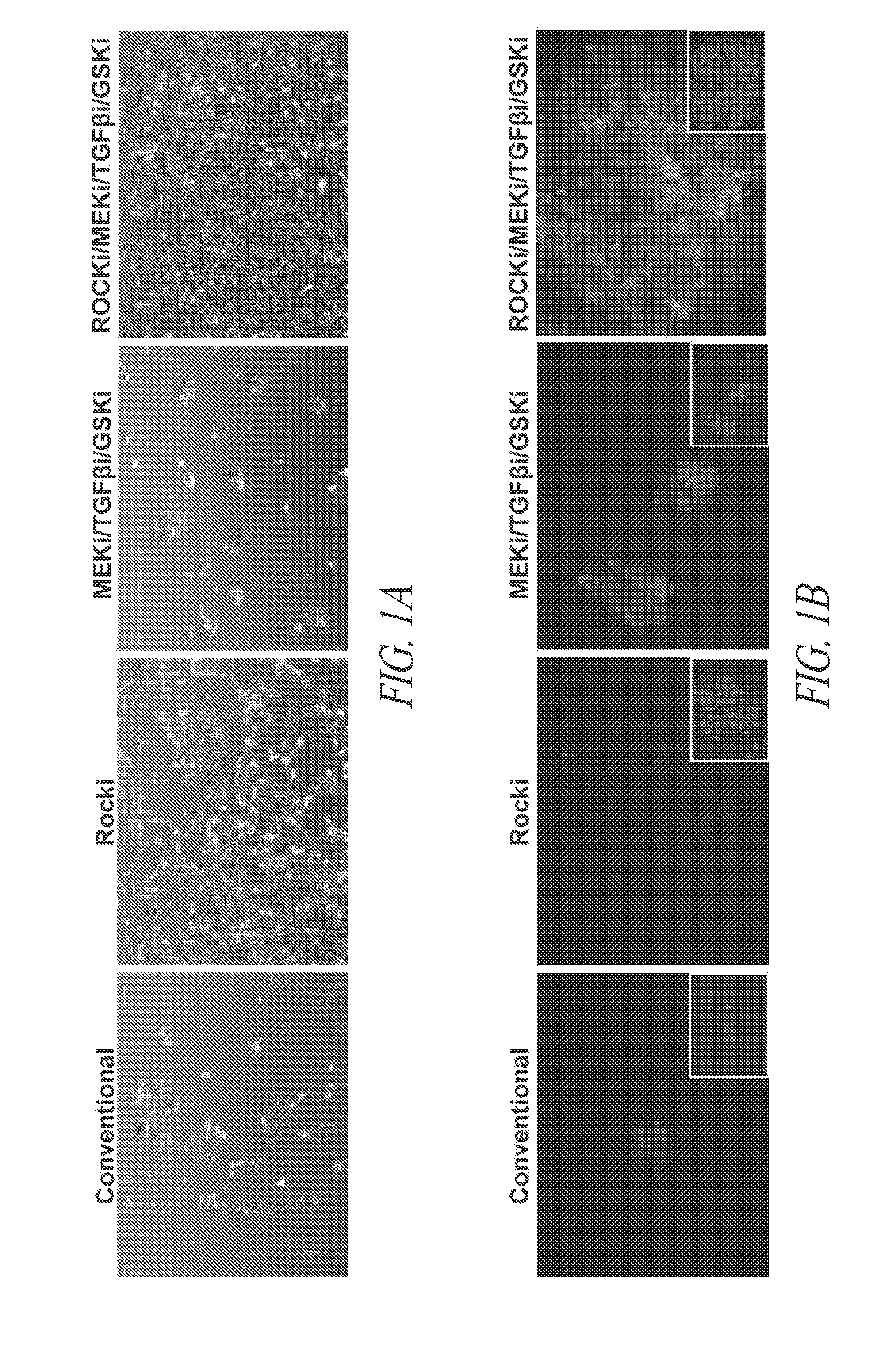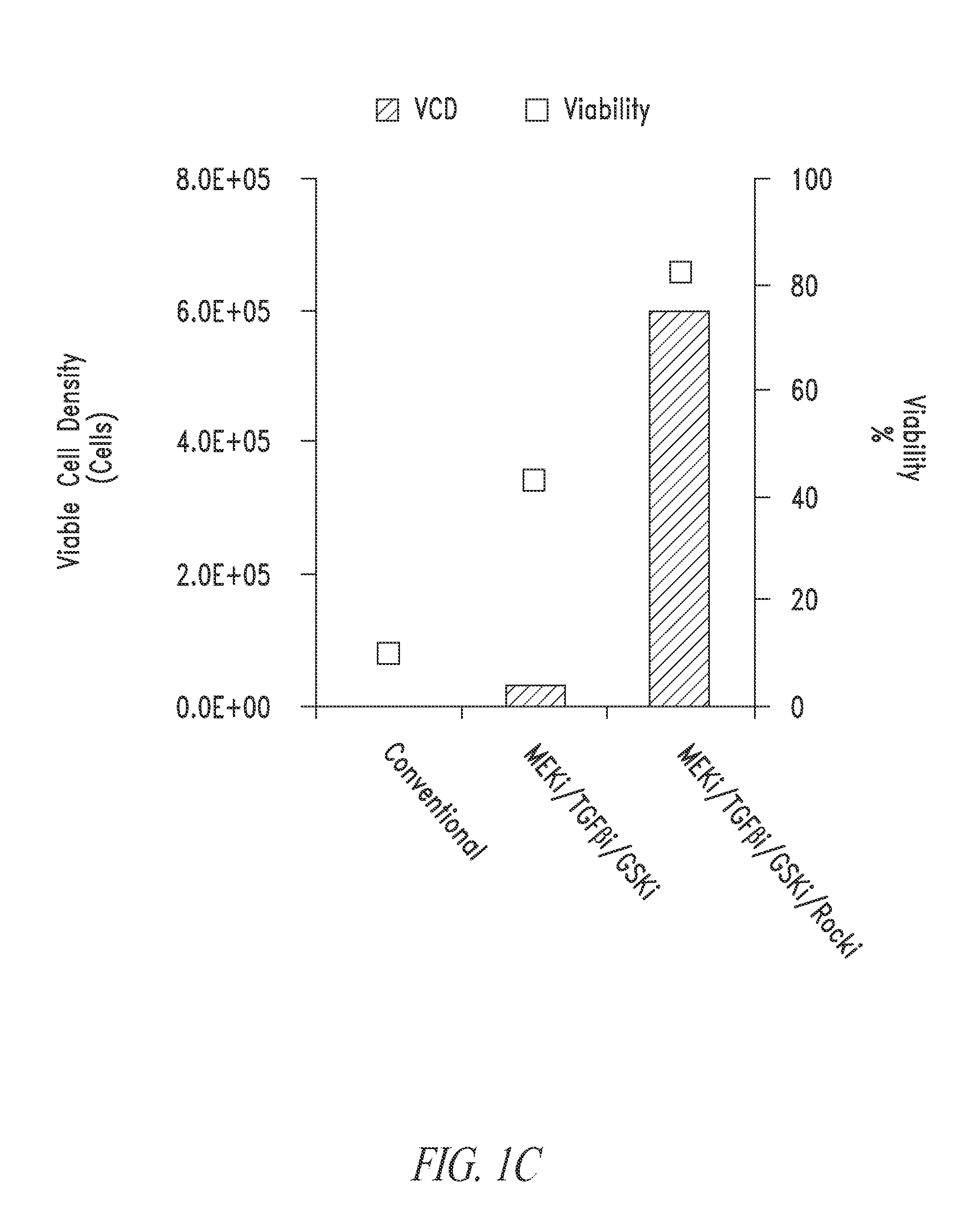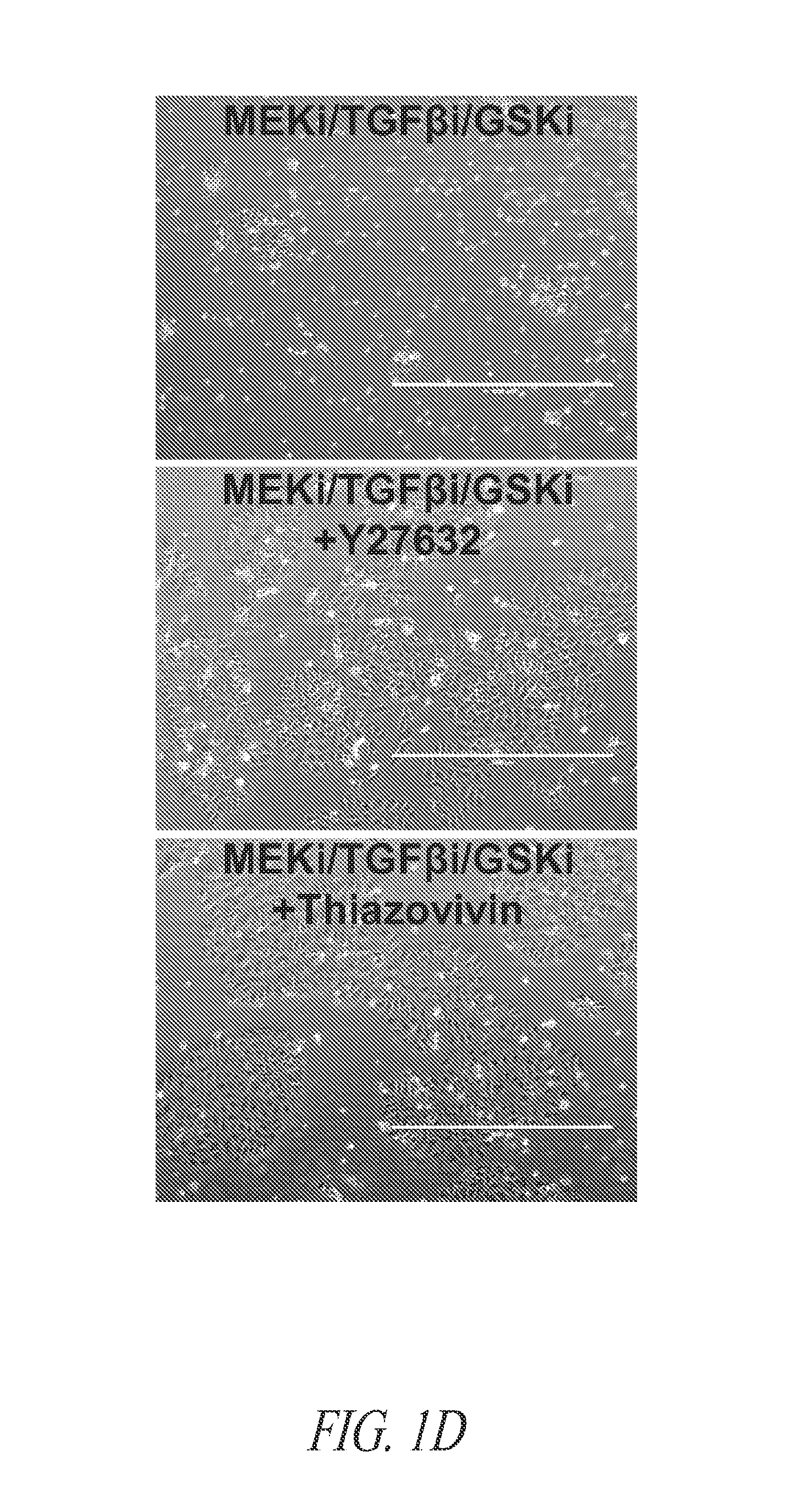Cell culture platform for single cell sorting and enhanced reprogramming of ipscs
- Summary
- Abstract
- Description
- Claims
- Application Information
AI Technical Summary
Benefits of technology
Problems solved by technology
Method used
Image
Examples
example 1
A. Cell Culture of Pluripotent Stem Cells
[0212]Prior to feeder-free adaptation, human induced pluripotent stem cells (hiPSCs) were maintained on feeder cells (mitomycin C treated mouse embryonic fibroblast (MEF) cells (Millipore)), and cultured with conventional medium. As used in this application, “conventional medium” refers to basal human embryonic stem cell (hESC) medium containing DMEM / F12 (Mediatech), 10 ng / mL bFGF (Invitrogen), 20% v / v knockout serum replacement (Invitrogen), 1% v / v non-essential amino acids (Mediatech), 2 mM L-glutamine (Mediatech) and 100 μM β-mercaptoethanol (Invitrogen). Conventional medium is also described in the first sections of Table 1. hiPSCs were passaged every 5-7 days by mechanically cutting and scrapping colonies into small pieces using a fine tip glass pipette (clump passaging), collected and dilute passaged 1:3-1:6 onto freshly seeded mitomycin C treated MEF cells with daily addition of hESC medium. Cell cultures were maint...
example 2
Cell Culture Conditions and Methods to Enable Feeder-Free Culture Environments and Enzymatic Single Cell Dissociation and Passaging of Pluripotent Stem Cells
[0228]The present example relates to the culturing and dissociation of pluripotent cell populations. Such cell populations include but are not limited to, embryonic stem cells (ESC) and induced pluripotent cells such as those generated through somatic cell nuclear transfer (SCNT) or via the introduction of pluripotency factors—induced pluripotent stem cells (iPSC). Pluripotent stem cell culture conditions have traditionally included the use of feeder-cells that are rendered mitotically inactive via irradiation or mitomycin-C treatment but provide growth factors and nutrients required for the support of stem cell cultures. The culturing of stem cell populations without the use of feeder cells would be advantageous for research and industrial applications where homogeneous populations of the stem cells are required or where scaled...
example 3
Methods and Culture Conditions to Enable Single Cell Sorting of Pluripotent Cells while Maintaining Pluripotency and Cell Viability
[0233]As described in Example 2, stem cell cultures of ESCs or iPSCs are routinely cultured on feeder cells and passaged by manual selection of cell colonies which are then mechanically dissociated prior to replating. The skilled researcher is able to recognize stem cell colonies having pluripotent, non-differentiated characteristics based on colony morphology and use this as a method of selecting pluripotent cells. Thus, pluripotent populations or populations with the desired characteristics can be picked and manually enriched from a population of cells where some cells have less desirable characteristics, such as cells showing signs of differentiation in culture or clumps of dead cells. This process is laborious and dependent upon skilled researchers to pick the desired cell populations. The use of a cell-enrichment or sorting technology where cells ar...
PUM
 Login to View More
Login to View More Abstract
Description
Claims
Application Information
 Login to View More
Login to View More - R&D
- Intellectual Property
- Life Sciences
- Materials
- Tech Scout
- Unparalleled Data Quality
- Higher Quality Content
- 60% Fewer Hallucinations
Browse by: Latest US Patents, China's latest patents, Technical Efficacy Thesaurus, Application Domain, Technology Topic, Popular Technical Reports.
© 2025 PatSnap. All rights reserved.Legal|Privacy policy|Modern Slavery Act Transparency Statement|Sitemap|About US| Contact US: help@patsnap.com



